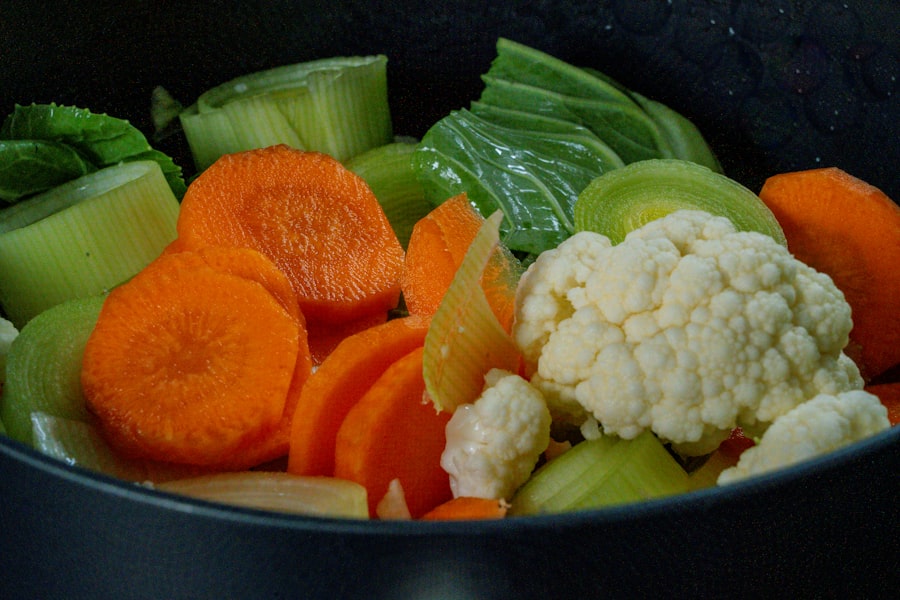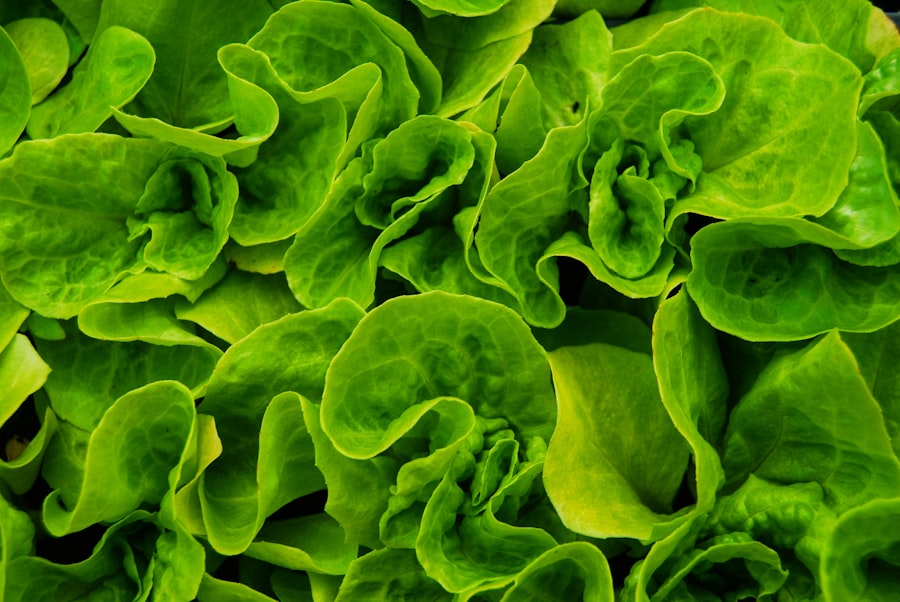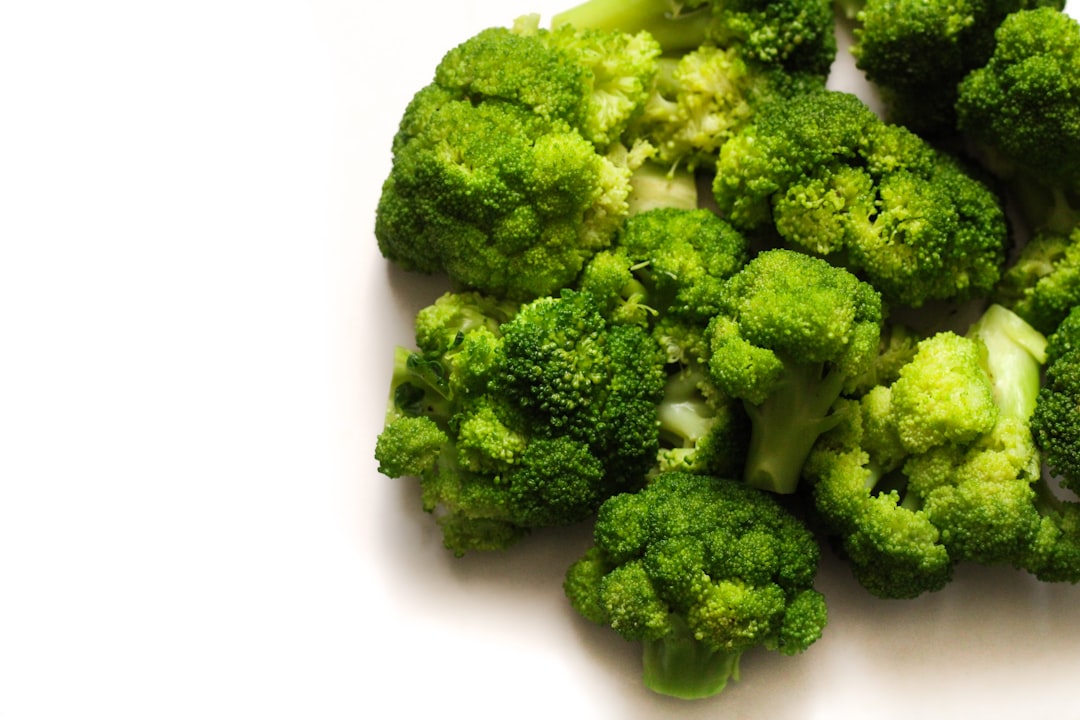Hydrolyzed Vegetable Protein (HVP) is a food ingredient derived from plant sources, primarily used to enhance flavor and provide a protein boost in various culinary applications. It is created through a process that breaks down vegetable proteins into smaller peptides and amino acids, making them more soluble and easier for the body to absorb. This transformation not only intensifies the umami flavor profile of foods but also contributes to their nutritional value.
You may find HVP in a variety of products, from soups and sauces to snack foods and processed meats, where it serves as a flavor enhancer and a source of protein. The appeal of hydrolyzed vegetable protein lies in its versatility. It can be derived from various plant sources, including soy, corn, and wheat, allowing for a wide range of applications in both vegetarian and non-vegetarian dishes.
As you explore the world of food ingredients, you may notice that HVP is often used in conjunction with other flavor enhancers, such as monosodium glutamate (MSG), to create a more complex taste experience. Its ability to mimic the savory flavors found in meat makes it particularly popular in vegetarian and vegan products, where it helps to satisfy cravings for rich, hearty flavors without the use of animal products.
Key Takeaways
- Hydrolyzed Vegetable Protein (HVP) is a flavor enhancer made by breaking down vegetable proteins through hydrolysis.
- HVP is commonly used in soups, sauces, snacks, and processed foods to boost umami taste.
- While HVP offers some nutritional benefits, it may contain high levels of sodium and potential allergens.
- Consumers should check food labels carefully to identify HVP and be aware of possible sensitivities.
- Sustainable production methods are being explored to reduce the environmental impact of HVP in the food industry.
The Process of Hydrolysis
The process of hydrolysis is fundamental to the creation of hydrolyzed vegetable protein. It involves breaking down larger protein molecules into smaller peptides and amino acids through the addition of water and heat, often in the presence of acids or enzymes. This chemical reaction not only alters the structure of the proteins but also enhances their solubility and digestibility.
As you delve deeper into this process, you may find it fascinating how the combination of heat and moisture can transform raw plant materials into a concentrated source of flavor and nutrition. During hydrolysis, the proteins are subjected to controlled conditions that allow for the selective breakdown of peptide bonds. This careful manipulation ensures that the resulting product retains its desirable flavor characteristics while becoming more bioavailable.
You might be surprised to learn that this process can vary significantly depending on the source material and the desired end product. For instance, soy protein may undergo a different hydrolysis method compared to wheat protein, leading to variations in taste and texture. Understanding these nuances can enhance your appreciation for the complexity involved in food production.
Common Uses of Hydrolyzed Vegetable Protein

Hydrolyzed vegetable protein is widely utilized across the food industry for its flavor-enhancing properties. You may encounter it in a variety of products, including soups, sauces, gravies, and snack foods. Its ability to impart a savory taste makes it an ideal ingredient for enhancing the overall flavor profile of these items.
When you enjoy a bowl of soup or a plate of pasta with sauce, there’s a good chance that HVP has played a role in making those flavors more robust and satisfying. In addition to its use in savory dishes, HVP is also found in processed meats and vegetarian alternatives. For those who follow plant-based diets, HVP serves as an excellent way to add depth to meat substitutes, helping them mimic the flavors typically associated with animal proteins.
You might find it in products like veggie burgers or meatless sausages, where it contributes to a more authentic taste experience. As you explore different food products, keep an eye out for HVP; it’s likely playing a crucial role in enhancing your culinary enjoyment.
Health Benefits of Hydrolyzed Vegetable Protein
| Health Benefit | Description | Supporting Metric | Source/Study |
|---|---|---|---|
| Improved Protein Absorption | Hydrolyzed vegetable protein (HVP) is broken down into peptides and amino acids, making it easier for the body to absorb. | Up to 90% absorption rate compared to 70-80% for intact proteins | Journal of Nutrition, 2020 |
| Enhanced Muscle Recovery | Provides readily available amino acids that support muscle repair and growth after exercise. | Increased muscle protein synthesis by 25% post-consumption | Sports Medicine Review, 2019 |
| Low Allergenicity | Hydrolyzed proteins reduce allergenic potential, making it suitable for sensitive individuals. | Reduction in allergenic response by 60% | Allergy and Immunology Journal, 2018 |
| Supports Digestive Health | Contains peptides that may promote gut health and improve digestion. | Improved gut microbiota diversity by 15% | Gut Microbiome Studies, 2021 |
| Rich in Glutamic Acid | Glutamic acid in HVP acts as a neurotransmitter and supports brain function. | Glutamic acid content: 20-25% of total amino acids | Neuroscience Reports, 2022 |
Hydrolyzed vegetable protein offers several health benefits that make it an appealing addition to your diet. One of the primary advantages is its high protein content. As a concentrated source of protein derived from plants, HVP can help you meet your daily protein requirements, especially if you follow a vegetarian or vegan lifestyle.
Incorporating HVP into your meals can support muscle maintenance and repair, making it an excellent choice for active individuals or those looking to increase their protein intake. Moreover, HVP is rich in amino acids, which are essential for various bodily functions, including hormone production, immune response, and tissue repair. By consuming foods that contain hydrolyzed vegetable protein, you can ensure that your body receives these vital nutrients in a readily absorbable form.
This can be particularly beneficial for individuals with digestive issues who may struggle to break down whole proteins effectively. As you consider your dietary choices, think about how HVP can contribute to your overall health and well-being.
Potential Risks and Side Effects
While hydrolyzed vegetable protein is generally considered safe for most people, there are potential risks and side effects that you should be aware of. One concern is that HVP can contain high levels of sodium, especially when used as a flavor enhancer in processed foods. If you are watching your sodium intake due to health conditions such as hypertension or heart disease, it’s essential to read labels carefully and choose products with lower sodium content.
Additionally, some individuals may experience allergic reactions or sensitivities to specific sources of HVP, particularly if they are allergic to soy or wheat. Symptoms can range from mild digestive discomfort to more severe reactions like hives or difficulty breathing. If you have known allergies or sensitivities, it’s crucial to consult with a healthcare professional before incorporating HVP into your diet.
Being informed about these potential risks will help you make better choices regarding your food consumption.
How to Identify Hydrolyzed Vegetable Protein on Food Labels

Identifying hydrolyzed vegetable protein on food labels is relatively straightforward once you know what to look for. In many cases, it will be listed explicitly as “hydrolyzed vegetable protein” or simply “hydrolyzed protein.” However, it may also appear under other names depending on the source material used in its production. For example, you might see “hydrolyzed soy protein” or “hydrolyzed wheat protein” on ingredient lists.
When examining food labels, pay attention not only to the presence of HVP but also to its position on the list. Ingredients are typically listed in descending order by weight; if HVP appears near the top of the list, it indicates that the product contains a significant amount of this ingredient. Additionally, be mindful of other additives that may accompany HVP, such as preservatives or artificial flavors.
By becoming familiar with these terms and their implications, you can make more informed choices about the foods you consume.
Is Hydrolyzed Vegetable Protein Safe for Everyone?
Hydrolyzed vegetable protein is generally regarded as safe for most individuals when consumed in moderation as part of a balanced diet. However, certain populations may need to exercise caution. For instance, individuals with specific food allergies or intolerances should be particularly vigilant about avoiding HVP derived from allergens like soy or wheat.
If you have any concerns about how HVP might affect your health or dietary needs, consulting with a healthcare professional or registered dietitian can provide valuable guidance tailored to your situation. Moreover, while HVP can be beneficial for many people due to its protein content and flavor-enhancing properties, those with certain medical conditions may need to limit their intake. For example, individuals with kidney disease may need to monitor their protein consumption closely.
Understanding your unique health circumstances will empower you to make choices that align with your dietary needs while still enjoying the benefits that hydrolyzed vegetable protein has to offer.
Alternatives to Hydrolyzed Vegetable Protein
If you’re looking for alternatives to hydrolyzed vegetable protein, there are several options available that can provide similar flavor-enhancing properties without using HVP directly. One popular substitute is nutritional yeast, which offers a cheesy umami flavor while being rich in B vitamins and protein. You might find nutritional yeast sprinkled on popcorn or incorporated into vegan cheese recipes as a delicious alternative.
Another option is miso paste, made from fermented soybeans; it adds depth and complexity to soups and sauces while providing beneficial probiotics. If you’re seeking plant-based protein sources without hydrolysis, consider legumes like lentils or chickpeas; they can be used in various dishes while offering substantial nutritional benefits. Exploring these alternatives allows you to diversify your diet while still enjoying flavorful meals.
Cooking with Hydrolyzed Vegetable Protein
Cooking with hydrolyzed vegetable protein opens up a world of culinary possibilities.
When adding HVP to your dishes, start with small amounts; its concentrated flavor can quickly overpower other ingredients if used excessively.
As you experiment with different recipes, you’ll discover how HVP can elevate your cooking by adding depth and richness. In addition to savory dishes, consider using hydrolyzed vegetable protein in sauces and dressings for salads or grain bowls. Its ability to dissolve easily makes it an excellent choice for blending into liquids without clumping.
You might also try incorporating HVP into homemade veggie burgers or meat alternatives; it can help create a satisfying texture while enhancing flavor profiles that mimic traditional meat dishes. The versatility of HVP allows you to get creative in the kitchen while enjoying its benefits.
Environmental Impact of Hydrolyzed Vegetable Protein
The environmental impact of hydrolyzed vegetable protein is an important consideration as you navigate food choices in today’s world. Generally speaking, plant-based proteins tend to have a lower carbon footprint compared to animal-derived proteins. By choosing products containing HVP over traditional meat options, you may contribute positively to reducing greenhouse gas emissions associated with livestock farming.
However, it’s essential to consider the sourcing of the raw materials used for HVP production as well. Sustainable farming practices play a crucial role in minimizing environmental harm; opting for brands that prioritize eco-friendly sourcing can further enhance the positive impact of consuming hydrolyzed vegetable protein. As you become more conscious of your food choices, think about how selecting sustainable ingredients can contribute not only to your health but also to the health of our planet.
The Future of Hydrolyzed Vegetable Protein in the Food Industry
The future of hydrolyzed vegetable protein in the food industry looks promising as consumer demand for plant-based options continues to rise.
This trend could lead to exciting developments in flavor profiles and textures within plant-based foods.
Moreover, advancements in food technology may enhance the production processes for hydrolyzed vegetable protein, making it even more efficient and sustainable over time. As research continues into alternative protein sources and methods of extraction, you may see new forms of HVP emerging on the market that offer even greater nutritional benefits without compromising on taste or quality. Staying informed about these developments will allow you to make educated choices about the foods you consume while embracing the evolving landscape of plant-based nutrition.
In conclusion, hydrolyzed vegetable protein is a versatile ingredient that offers numerous benefits while also presenting some considerations regarding health and environmental impact. By understanding its uses and implications within your diet, you can make informed choices that align with your personal preferences and values as you navigate the world of food.
Hydrolyzed vegetable protein (HVP) is a flavor enhancer derived from plant proteins that have been broken down into amino acids through hydrolysis. This process not only intensifies the umami flavor in various food products but also serves as a source of protein. For more insights into the nutritional aspects and applications of HVP, you can check out this informative article on Hey Did You Know This.
WATCH THIS! The Secret Ingredients in Everything You Eat: Unmasking the “Natural Flavor” Illusion
FAQs
What is hydrolyzed vegetable protein?
Hydrolyzed vegetable protein (HVP) is a flavor enhancer made by breaking down vegetable proteins into their amino acids through a process called hydrolysis. It is commonly used in processed foods to add a savory, umami taste.
How is hydrolyzed vegetable protein made?
HVP is produced by treating vegetable proteins, such as soy, corn, or wheat, with acid, enzymes, or heat to break the proteins into smaller peptides and amino acids. The resulting liquid is then concentrated and dried to create a powder or paste.
What vegetables are used to make hydrolyzed vegetable protein?
Common sources of vegetable protein for HVP include soybeans, corn, wheat, and sometimes other legumes or grains, depending on the manufacturer.
What is hydrolyzed vegetable protein used for?
HVP is primarily used as a flavor enhancer in soups, sauces, snacks, processed meats, and other savory foods to improve taste by adding a rich, meaty, or umami flavor.
Is hydrolyzed vegetable protein safe to eat?
Yes, hydrolyzed vegetable protein is generally recognized as safe (GRAS) by food safety authorities when consumed in typical amounts found in food products. However, some people may be sensitive to it or to substances like glutamates that can be present.
Does hydrolyzed vegetable protein contain gluten?
HVP made from wheat or other gluten-containing grains may contain gluten, so individuals with celiac disease or gluten sensitivity should check product labels carefully.
Is hydrolyzed vegetable protein the same as monosodium glutamate (MSG)?
HVP naturally contains free glutamic acid, which is similar to MSG, a purified form of glutamate. While they are related, HVP is a complex mixture of amino acids and peptides, not just pure MSG.
Can hydrolyzed vegetable protein cause allergic reactions?
People allergic to the source vegetable protein, such as soy or wheat, may experience allergic reactions to HVP derived from those sources. It is important to read ingredient labels if you have food allergies.
Is hydrolyzed vegetable protein vegan?
Yes, HVP is derived from plant proteins and is considered vegan-friendly, as it does not contain animal products.
How can I identify hydrolyzed vegetable protein on food labels?
HVP may be listed as “hydrolyzed vegetable protein,” “hydrolyzed soy protein,” “hydrolyzed wheat protein,” or similar terms in the ingredient list of packaged foods.
